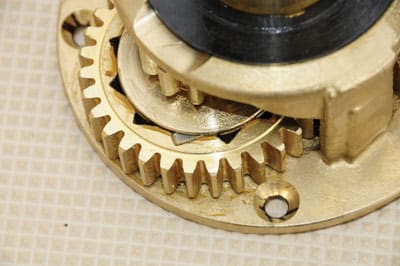
Winch Maintenance
If there was ever a category of sailing gear that benefits from preventive maintenance, winches are it.
The loads on winches are substantial indeed. Add to that a regular dousing with seawater and you have machinery that, if not routinely serviced, is prone to premature failure. The good news: Manual single-speed winch service is an easily undertaken maintenance project, and such work on multispeed winches is only slightly more complex. Parts and pieces are typically very simple. Note, however, that winch parts, while uncomplicated in nature, can be easily dropped or lost in a marine environment.
Typically, only such common hand tools as Allen wrenches and screwdrivers are required for maintenance, along with a basin to hold parts and cleaning solutions.
Before disassembling a winch, review the service booklet (to contact winch manufacturers, see “Online Winch Resources” at the end of this article), which often includes a valuable exploded view of the components. Doing so familiarizes you with the order of assembly, the orientation of certain parts, and the identification of parts that need replacement.
If you’re working on an electric winch, disable the power before you begin. If it’s equipped with a disconnect switch or a circuit breaker—in the latter case, be certain this is for the primary power supply and not merely for the low-amperage switch relay—shut the switch and label it so it’s not inadvertently turned on. If the winch doesn’t include a disconnect switch, you may have to remove its fuse.
Components that are most likely to wear out are pawls and springs, bearings, and ratcheting gears. Most manufacturers offer these in service kits, though some parts are available individually. Every winch should have its pawls and springs replaced at some point, so it makes sense to have these on hand, especially for the first rebuild. Those out cruising may also want to keep a service kit aboard for each winch.
After disassembly, such lubricated parts as bearings, gears, spindles, and pawls should be soaked in mineral spirits or kerosene to wash off old, contaminated grease.
When reassembling, don’t overlubricate. Pawls should be treated only with light machine oil, not grease, which can cause them to stick. Bearings, gears, and ratchet tracks require only a light coating of the appropriate type of grease. Excess grease can trap dirt or find its way to the pawls.
While the winch is disassembled check anchoring fasteners and be certain that the base drain isn’t clogged. Once reassembled, test the winch with a light load to ensure that it’s operating properly. Winches that undergo regular maintenance are reliable and can be expected to last the life of the vessel.
Check out our winch-overhaul photo gallery.
Online Winch Resources
• Andersen Winches
• Antal Winches
• Holmatro
• Harken
• Lewmar
Steve D’Antonio offers services for boat owners and buyers through Steve D’Antonio Marine Consulting.








